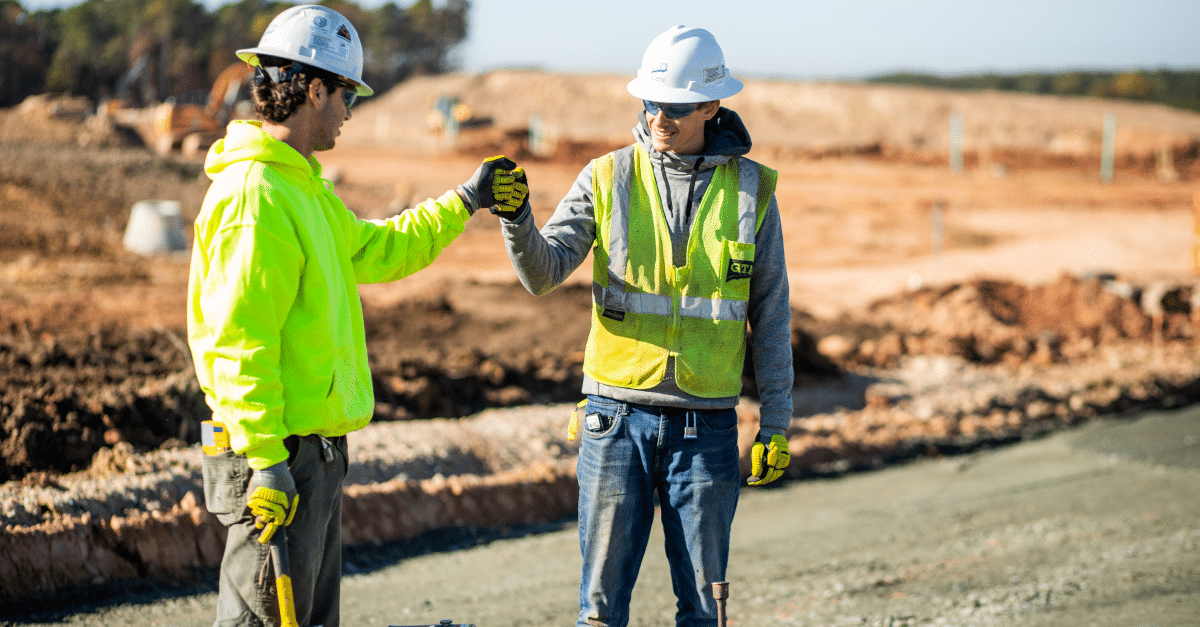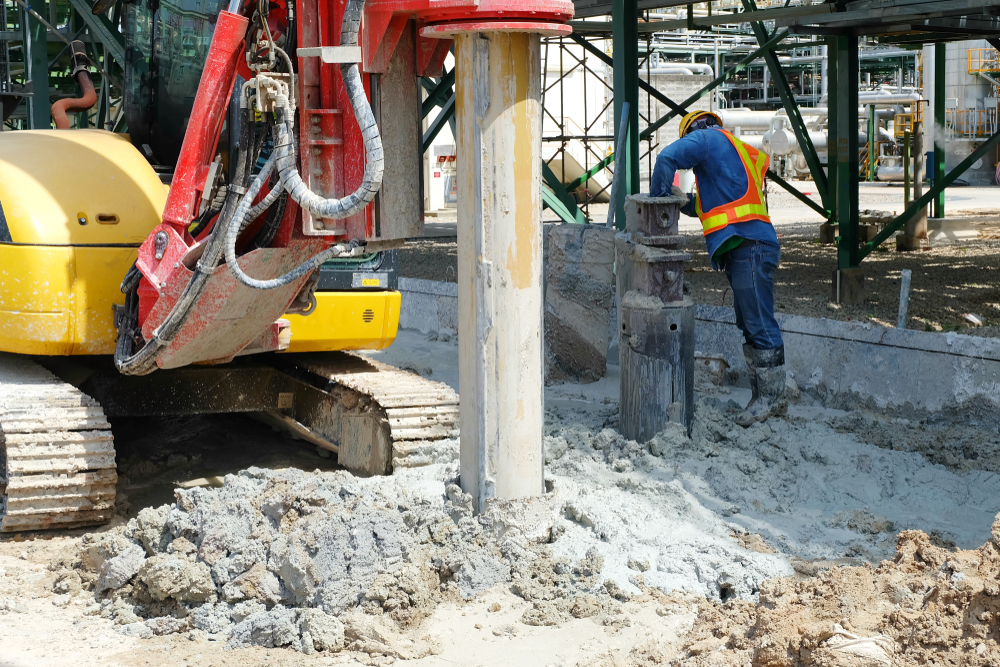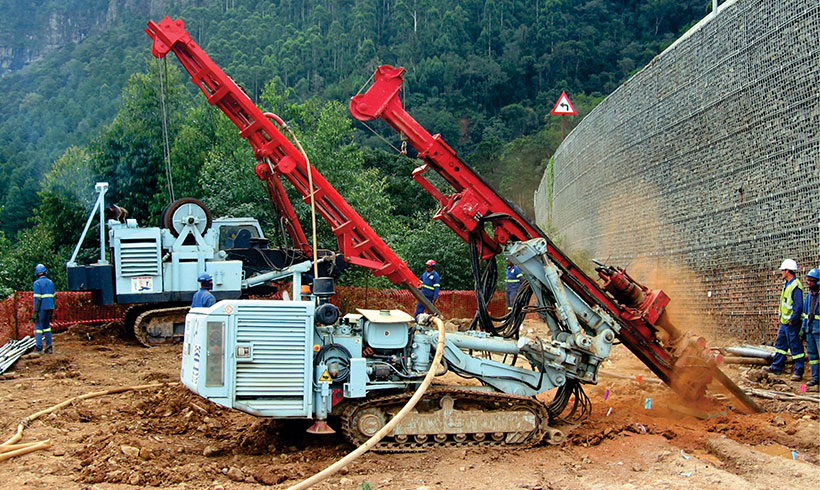The Single Strategy To Use For Geotechnical Engineering For Construction Projects
Some Known Details About Geotechnical Engineering For Construction Projects
Table of ContentsThe Definitive Guide to Geotechnical Engineering For Construction ProjectsThe Single Strategy To Use For Geotechnical Engineering For Construction ProjectsThe 20-Second Trick For Geotechnical Engineering For Construction ProjectsThe 8-Second Trick For Geotechnical Engineering For Construction ProjectsGeotechnical Engineering For Construction Projects for DummiesAbout Geotechnical Engineering For Construction Projects
The role of geotechnical engineering considerably takes care of realizing the features of soil and rock, which might differ significantly by their thickness, dampness material etc. These attributes need to be examined by geotechnical designers to forecast their activities under various scenarios. The security along with stability of structures are influenced by dirt problems, making this evaluation needed., in addition to how they communicate with constructions that have been erected on or within them, is one of the main explanations for why geotechnical engineering is important.
Ecological security is accomplished via geotechnical design. Experience in air, water, and soil top quality maintenance is placed to use by geotechnical designers to lessen the adverse effects of jobs.
Facilities growth, offshore engineering, passage building, and deep foundations. Risk-based layout and multidisciplinary teams. These parts will certainly maintain the field evolving and ensure its ongoing value in the years to find. To summarize, geotechnical engineering is an essential self-control that maintains the durability and honesty of civil framework. Geotechnical designers add to making structure jobs efficient all over the globe by recognizing the behaviour of earth products and applying suitable preparation approaches.
Getting The Geotechnical Engineering For Construction Projects To Work
By analyzing soil, rock, and subsurface problems, geotechnical engineers give important insights that help in the design, construction, and upkeep of structures and facilities.

Get This Report about Geotechnical Engineering For Construction Projects
Research laboratory screening: Figuring out the buildings of soil and rock. Area screening: Performing tests on-site to analyze problems. Analysis and layout: Utilizing data to make foundations, maintaining wall surfaces, tunnels, and other structures. A number of high-profile construction jobs have actually efficiently made use of geotechnical design to guarantee their security and security. As an example:: The world's tallest building needed a deep understanding of the underlying geology.

As a leader in geotechnical design, BECC Inc. is devoted to delivering ingenious and efficient solutions that meet the greatest requirements of high quality and security., a mechanical designer and rock hound.
Getting My Geotechnical Engineering For Construction Projects To Work
Terzaghi likewise developed the framework for theories of birthing capacity of foundations, and the theory for prediction of the price of negotiation of clay layers because of combination. Later on, Maurice Biot fully developed the three-dimensional soil loan consolidation theory, extending the one-dimensional version previously look what i found established by Terzaghi to extra general theories and presenting the collection of fundamental formulas of Poroelasticity.
Geotechnical designers examine and identify the properties of subsurface conditions and products. They additionally design matching earthworks and keeping frameworks, passages, and structure foundations, and might supervise and examine sites, which may further involve website monitoring in addition to the threat evaluation and reduction of natural dangers - Geotechnical Engineering for Construction Projects. Geotechnical designers and engineering rock hounds carry out geotechnical examinations to get info on the physical properties of soil and rock hidden and beside a site to design earthworks and structures for proposed frameworks and for the repair work of distress to earthworks and structures triggered by subsurface conditions.
About Geotechnical Engineering For Construction Projects
Still, they are sometimes made use of to permit a geologist or engineer to be lowered right into the borehole more info here for straight visual and manual assessment of the soil and rock stratigraphy. Different soil samplers exist to meet the demands of various design projects. The conventional infiltration examination, which uses a thick-walled split spoon sampler, is the most typical means to gather disrupted samples.

If the interface between the mass and the base of an incline has an intricate geometry, incline stability evaluation is tough and mathematical solution techniques are needed. Typically, the interface's exact geometry is unidentified, and a simplified interface geometry is presumed. Finite inclines call for three-dimensional models to be evaluated, so most slopes are analyzed assuming that they are infinitely large and can be represented by two-dimensional designs.
The 2-Minute Rule for Geotechnical Engineering For Construction Projects
Creating the layout based on a functioning hypothesis of habits expected under the most potential conditions. Selection of quantities to be observed as building and construction profits and determining their prepared for values based on the working theory under the most unfavorable conditions.
Dimension of quantities and evaluation of real conditions. Layout adjustment per real conditions The observational technique is suitable for building and construction that has already started when an unanticipated advancement occurs or when a failing or mishap looms or has already happened. It is inappropriate for jobs whose design can not be changed during building and construction.